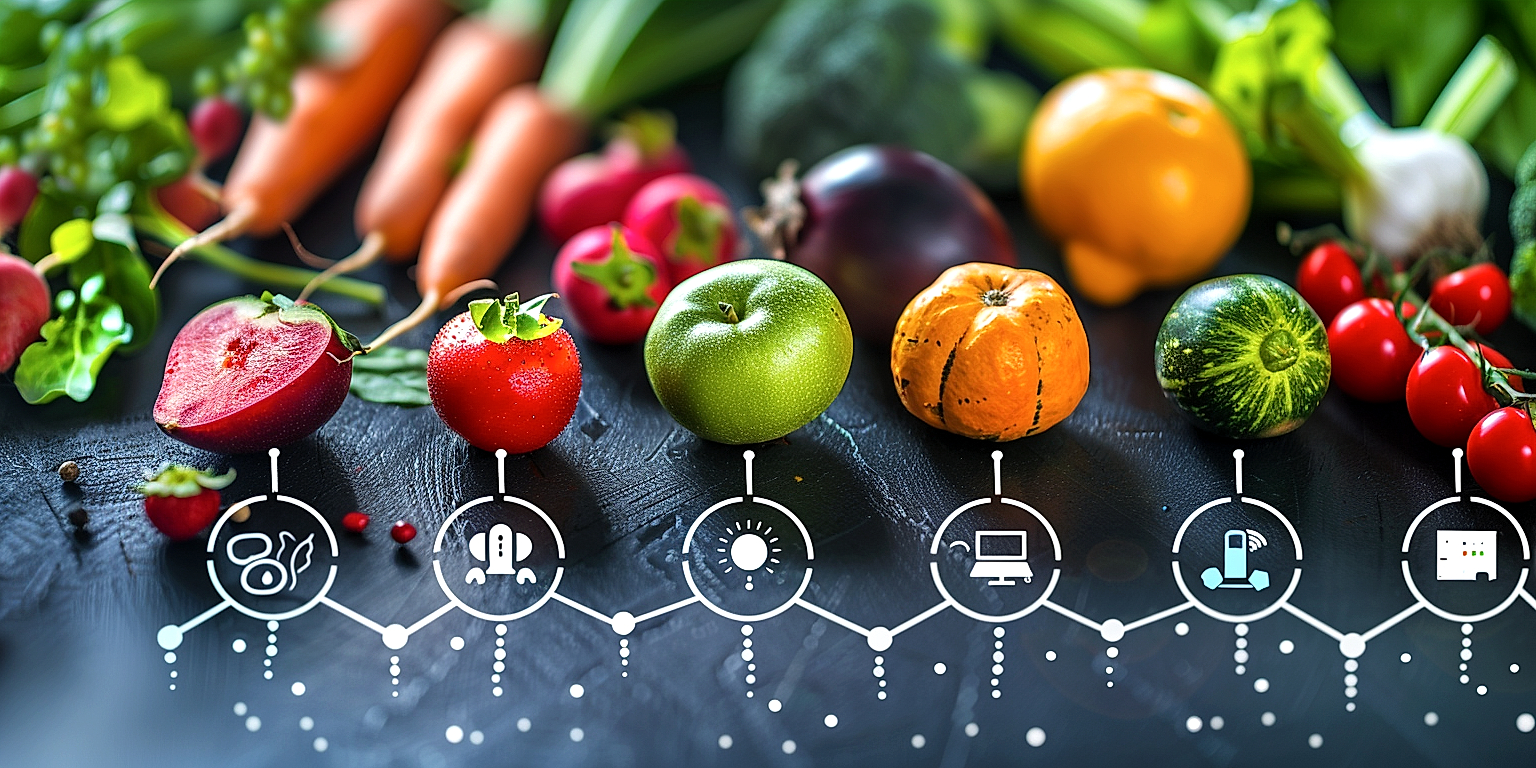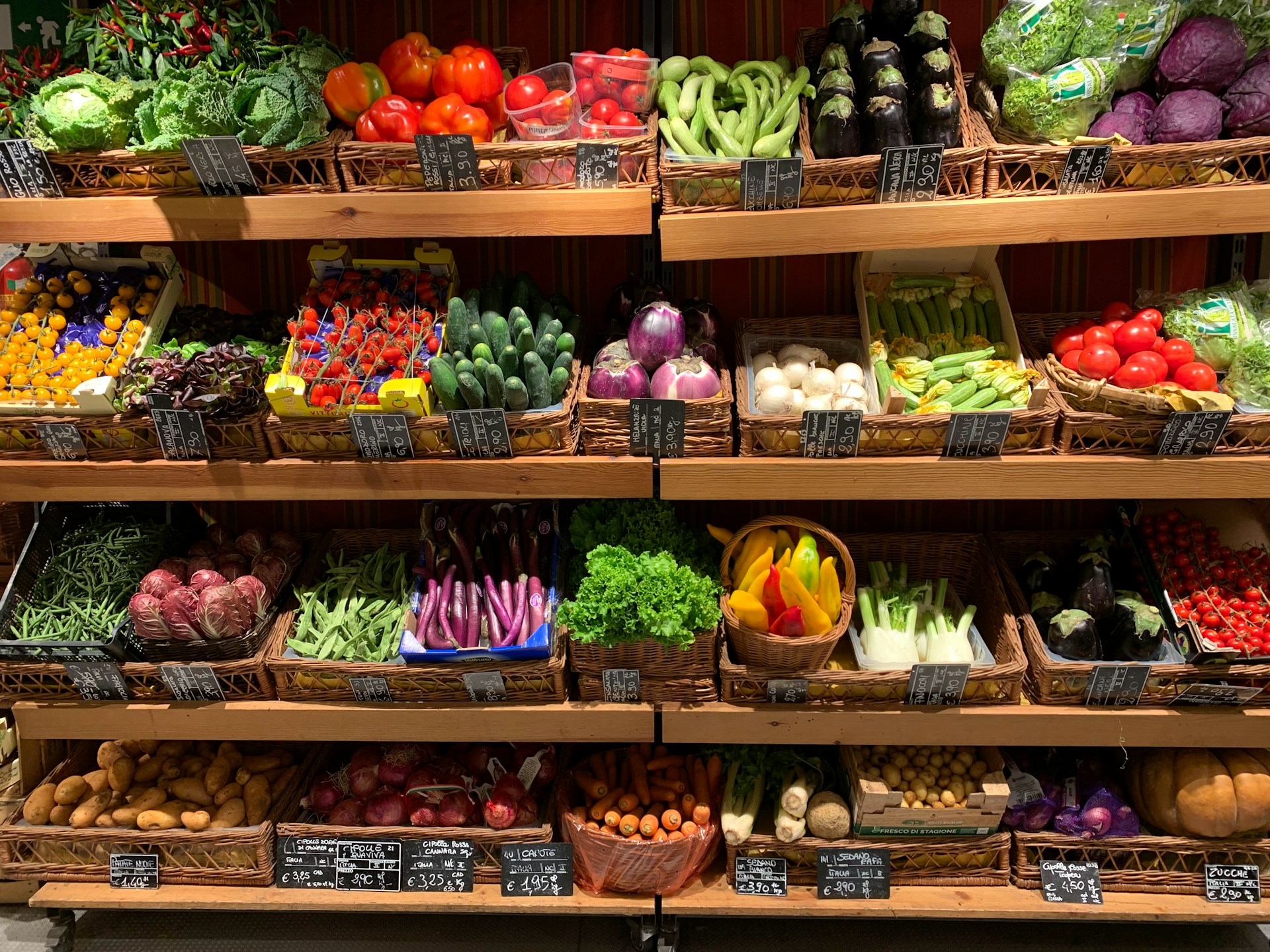The cold chain, an indispensable component of the global food industry, ensures that perishable goods, particularly fruits and vegetables, retain their quality from farm to table.
Yet, its environmental footprint raises pressing concerns.
The sheer energy requirement to maintain temperature-controlled environments poses a significant challenge.
Refrigeration and transportation within the cold chain contribute vastly to greenhouse gas (GHG) emissions.
Furthermore, the resultant air and noise pollution trigger serious implications for the environment.
In this post, we delve into these impacts, casting a discerning eye on viable improvement prospects.
Environmental Impacts Of Cold Chain In Produce Distribution
1. Increased Greenhouse Gas Emissions
The cold chain in produce distribution has been identified as a significant contributior to increased greenhouse gas emissions.
This is primarily due to the high demand for energy in the preservation and transportation of perishable goods.
For instance, refrigeration units consume a considerable amount of energy, especially when storing and transporting produce over long distances.
This consumption of vast amounts of energy in a phase primarily characterized by fossil fuels inevitably results in the increase of carbon dioxide and other greenhouse gas emissions.
Besides, the refrigeration process also releases potent greenhouse gases such as hydrofluorocarbons (HFCs), which are thousands of times more powerful at trapping heat in our atmosphere than carbon dioxide.
Our global system of food distribution reliant on cold chain logistics greatly contributes to the acceleration of climate change through the release of these potent gases.
Given that man-made climate change has a significant, negative impact on our global environment, the cold chain sector becomes a logical point of reduction and optimization in our efforts to mitigate global greenhouse gas emissions.
The areas of the cold chain logistics sector that are major contributors to greenhouse gas emissions include food processing facilities, refrigerated transportation, intermediary storage facilities, and retail outlets.
Feeding the growing global population while minimizing our impact on the environment is one of the greatest challenges humanity faces today.
The industry must therefore embrace eco-friendly practices in its operations to significantly reduce emissions, such as shifting to renewable energy sources, optimizing energy use and implementing energy-efficient technology.
Furthermore, tighter regulation and oversight of cold storage facilities can also help prevent leakage of refrigerants, thus reducing the emission of potent greenhouse gases.
There are also opportunities for companies in the sector to invest in carbon offset projects, which could serve to counterbalance their own emissions.
The environmental impact of increased greenhouse gas emissions from the cold chain in produce distribution is therefore a critical issue, deserving of increased attention and action in the industry.
To create a more sustainable future, businesses, consumers, regulators, and policymakers must acknowledge and address the environmental impact of the cold chain in our global food distribution systems.
As such, the global cold chain logistics sector is ripe for innovation and transformation aimed at reducing its contribution to global greenhouse gas emissions while maintaining its essential role in feeding the world.
2. Elevated Energy Consumption
The energy consumption in the cold chain process, particularly in produce distribution, cannot be overstated.
Significant amounts of energy are required to maintain the consistent low temperatures required for fresh produce from farm to table.
Consequently, this high energy demand leads to an increase in power generation, adding to the total greenhouse gas emissions.
It is evident that maintaining a cold chain for produce distribution is an energy-intensive process that contributes substantially to the overall environmental impact.
This can be particularly worrisome in regions where energy generation is largely dependent on fossil fuels, whose combustion results in greenhouse gas emissions.
These demands place immense strain on power grids, creating a significant risk for blackouts or power instability.
Beyond electricity, the transportation aspect of cold chain operations also consumes enormous amounts of non-renewable fossil fuels like petrol and diesel.
Additionally, distribution centers in the cold chain use energy for lighting, cooling, and equipment operation.
It is also essential to note that excessive energy usage also leads to higher financial expenditure in the supply chain, affecting the price of the fresh produce across the line.
Older cooling equipments with low energy efficiency ratings further contribute to elevated energy consumption.
As a result, companies often rely heavily on diesel generators, especially in areas with unreliable electricity supplies.
This reliance, in turn, releases harmful pollutants into the atmosphere, thus supporting the cycle of environmental degradation.
Solutions like renewable energy resource consumption, especially solar panels, can be used to optimize energy consumption but has its limitations and challenges.
Elevated energy consumption in the produce cold chains is a significant contributor to environmental impact.
Thus, it is vital to explore and implement sustainable solutions and technologies that can greatly improve energy efficiency and decrease environmental impact.
3. Excessive packaging waste
The cold chain supply process in produce distribution is a significant contributor to excessive packaging waste.
This is mainly attributable to the fact that perishable goods, such as fruits, vegetables, and dairy products, often demand for more protective packaging to maintain their freshness and prevent spoilage during transit.
The type of materials used for packaging in a typical cold chain, such as plastic bags, polystyrene foam boxes or single-use insulated wrap are typically non-biodegradable and take several hundreds to thousands of years to decompose, hence leading to significant environmental pollution.
One of the problematic aspects of these packaging materials is the fact that they often end up in landfills, incinerators or worse, in natural environments like oceans, causing harm to aquatic life and ecosystems.
Constant reliance on single-use packaging materials and lack of efficient recycling programs aggravate the problem of packaging waste in cold chain distribution.
Furthermore, these materials, particularly plastic, may break down into microplastics, tiny pieces of plastic less than 5 mm in size, which are capable of accumulating in the ecosystem and food chain, posing significant risks to the environment and human health.
Another overlooked aspect of packaging waste is the significant resources and energy required to produce these packaging materials in the first place.
From the extraction and processing of natural resources to the manufacturing and distribution of these packaging materials, all these stages, undoubtedly, have a significant greenhouse gas emissions footprint.
The current packaging waste standard in the cold chain process is largely due to failed attempts at installing effective recycling systems and lack of governmental regulations.
What is apparent from these facts is that the excessive packaging waste issue in cold chain distribution is a hectic predicament that demands swift intervention from both industry stakeholders and policy makers.
There is a pressing need for the adoption of sustainable packaging solutions, such as reuse or recycling, and alternative materials that are biodegradable.
Among these solutions could be incentivizing companies for reducing their packaging waste, imposing stricter regulations on packaging waste, and promoting consumer awareness on the environmental impacts of excessive packaging waste.
Additionally, research and development must be bolstered for creating innovative solutions that not only minimize packaging waste but also maintain the quality of perishable goods in the cold chain distribution process.
As a society, we must recognize that it is our collective responsibility to work towards remedying the environmental impacts of cold chain in produce distribution, with packaging waste being a particularly urgent area of focus.
Only by adopting a rigorous, multi-pronged approach, can we hope to mitigate the environmental footprint of our cold chain distribution systems.
4. Biodiversity Loss from Industrial Refrigeration
Industries involved in produce distribution heavily rely on industrial refrigeration to maintain the quality and shelf life of produce.
However, the industrial cooling processes often lead to significant biodiversity loss.
One of the leading causes of this is the release of coolants, which are substances that often have environmentally harmful effects, into natural ecosystems.
When these substances infiltrate different ecosystems, they can significantly disrupt the optimum conditions necessary for the survival and growth of various flora and fauna.
This results in the reduced ability for affected species to survive and reproduce, leading to a boost in the rate of biodiversity loss.
Furthermore, as these substances often have a long decay time, their harmful effects on biodiversity can persist over a prolonged period.
The actions to mitigate the biodiversity loss should be focused on the transition to eco-friendly refrigerants.
Such refrigerants should have a minimum contribution to global warming, ozone depletion, and aquatic and terrestrial toxicity.
Additionally, these refrigerants should have minimal impact on biodiversity loss.
Companies can also address this problem by investing in refrigeration technologies designed to minimize leakage.
This can include using technologies that are less prone to leakages or repairing leaks immediately they are detected to reduce the amount of refrigerants released into the environment.
Another important mitigation measure is the appropriate disposal of retired refrigeration equipment, to prevent the release of remaining refrigerants into the environment.
The Industry leaders also should advocate for the development and adoption of comprehensive, globally harmonized energy efficiency standards and labels.
These measures favor the enhancement of the performance and energy efficiency of refrigeration systems, thus reducing the associated biodiversity loss.
Overall, industries involved in produce distribution should aim to adopt more sustainable refrigeration practices, to mitigate the environmental impacts of cold chains on biodiversity.
Substantial efforts in technology innovation, regulation adoption, and public awareness are needed to achieve this goal.
5. Chemical leaks risk from refrigerants
When it comes to the environmental impacts of the cold chain in produce distribution, the risk of chemical leaks from refrigerants is an area of critical concern.
Refrigeration units are used extensively in the cold chain, from the initial stages of cooling the produce at the farm, during transport, storage in warehouses, to the distribution centers and finally at the retail stores.
These refrigeration systems contain refrigerants which are often potent greenhouse gases and can cause significant harm to the environment if they leak.
Typical refrigerants used in the cold chain include hydrofluorocarbons (HFCs), chlorofluorocarbons (CFCs), and hydrochlorofluorocarbons (HCFCs).
These substances are known for their substantial global warming potential, in addition to the damage they pose to the ozone layer when released into the atmosphere.
Furthermore, given the scale and ubiquity of the cold chain infrastructure globally, even minor leaks from a large number of units can add up to a significant environmentally detrimental impact.
Fluorinated gases like HFCs have a warming effect up to a thousand times stronger than carbon dioxide on a per-molecule basis.
Therefore, leaks from refrigeration units are not just a risk to localized ecosystems, but contribute to global climate change.
Apart from their impacts on global warming, these refrigerants can also be harmful to human health.
Exposure to high levels of these chemicals, especially in case of a large leak, can have toxic effects and can induce symptoms like nausea, head pain and in extreme cases can lead to unconsciousness or even death.
While preventive measures and safety protocols can reduce the risk of such leaks, these cannot completely eliminate the potential hazards associated with the use of these refrigerants.
Moreover, in many regions around the world, proper handling and disposal of these refrigerants remain a challenge, potentially resulting in unintended leaks into the environment.
Inefficient or broken refrigeration equipment on a global scale can release substantial quantities of these harmful gases into the atmosphere.
As we strive to find solutions to mitigate the environmental impacts of the cold chain in produce distribution, addressing the issue of chemical leaks from refrigerants must be a priority.
Whether by employing advanced technologies for leak detection and prevention or by switching to less harmful alternatives to these refrigerants, the cold chain industry has a crucial role to play in environmental stewardship.
6. Noise Pollution from Cooling Machinery.
The cold chain logistics industry considerably adds to noise pollution in the environment.
Excessive noise levels are particularly characteristic of the running cooling machinery utilized in cold storage facilities and refrigerated transports.
This constant machinery hum significantly contributes to the cumulative noise pollution levels in the areas around these facilities and transport routes.
This noise pollution not only negatively impacts the ambient environment, but also `disrupts local communities` and `wildlife habitats`.
The relentless noise generated by the cooling systems affects the quality of life for individuals residing or working in the vicinity of these facilities.
A prolonged exposure to high noise levels not only causes stress, annoyance and sleep disturbance, but can also lead to more serious health issues such as hearing loss or cardiovascular problems.
Furthermore, the constant noise generated by cooling machines disturbs the peaceful coexistence of wildlife, compromising their normal patterns of communication, breeding and navigation.
Such disturbance in their natural behaviors can negatively impact the local biodiversity.
Meanwhile, most industrial cooling machines lack adequate noise control measures, further exacerbating the problem.
The noise generated by these machines does not discriminate between day and night, creating a continuous source of noise pollution.
Solving this issue requires the application of sound mitigation strategies such as the use of soundproof materials, noise control enclosures, and machinery upgrades to quieter models.
However, industry-wide implementation of these strategies can be met with challenges related to their cost, practicality, and effectiveness.
Regulations and policies promoting noise reduction in industrial operations can also be beneficial, but their enforcement requires a balanced approach considering the industry’s efficiency and productivity.
Cold chain logistics is a key industry for global food distribution, but its impact on noise pollution is a significant environmental concern that needs greater attention and action.
Addressing this problem demands increased awareness, stringent regulations, and commitment to sustainable practices by the industry participants, policymakers, and society as a whole.
7. Resource depletion for infrastructure
The cold chain in produce distribution requires a vast resource-intensive infrastructure that contributes to global resource depletion.
From the construction of refrigerated warehouses to the manufacture of refrigerated transportation vehicles, these infrastructures demand an immense quantity of both renewable and non-renewable resources.
The use of steel, concrete, plastic, and energy sources in these infrastructures not only affects the depletion of these resources but also contributes to the increase of greenhouse gas emissions.
In many countries, the necessary resources such as minerals for the production of refrigeration equipment are becoming increasingly scarce.
Moreover, the extraction, processing, transport, and disposal of these minerals and raw materials also have enormous environmental implications due to land disturbance, emissions, and waste.
Alongside this, the production of refrigerants, which are integral to the cooling technologies, often involves processes that deplete precious resources like water and energy.
The refrigeration machinery in warehouses and retail stores are usually energy-intensive and therefore require constant electricity supply.
This involves the exploitation of non-renewable resources like coal and natural gas, contributing to the strain on energy demand and amplifying the environmental harm linked with its extraction and combustion.
Production processes associated with the manufacture of this machinery also significantly contribute to resource depletion.
Every step in the production of these machines, from the extraction of raw materials to assembling and shipping the final product, consumes resources while generating a host of environmental issues including pollution and waste disposal.
Furthermore, there is the issue of infrastructure maintenance which also incurs substantial resource consumption.
From regular servicing of vehicles to cleaning and repairing warehouses, these processes require materials and energy, thereby further straining our planet’s resources.
Additionally, resource depletion affects biodiversity as it can disrupt habitats and species when resources are extracted from ecosystems.
For instance, mining operations for raw materials used in production can lead to deforestation and habitat fragmentation, impacting the biodiversity negatively.
As we move forward, it is critical to recognize the environmental impact and resource implications of the cold chain in produce distribution.
While it delivers many benefits such as reducing food waste and extending shelf life, the environmental cost in terms of resource depletion cannot be overlooked.
The Bottom Line
The detrimental environmental impacts caused by the cold storage industry are undeniable.
The constant increase in greenhouse gas emissions contributes heavily to climate change while the soaring energy consumption rates disrupt the balance of our finite resources.
This, coupled with excessive waste from packaging materials, not only poses a disposal issue but also amplifies the industry’s carbon footprint.
Equally troubling is the profound biodiversity loss linked to industrial refrigeration as well as the potential health risks associated with chemical leaks from refrigerants.
Noise pollution from cooling machinery adds further to the environmental burden, infringing on the serenity of our natural habitats.
Lastly, the steep resource depletion to construct and maintain such infrastructure further exemplifies the unsustainable practices of this sector.
It’s clear that urgent measures are needed to mitigate these repercussions and pave the way for a sustainable and eco-friendly approach toward cold storage.




